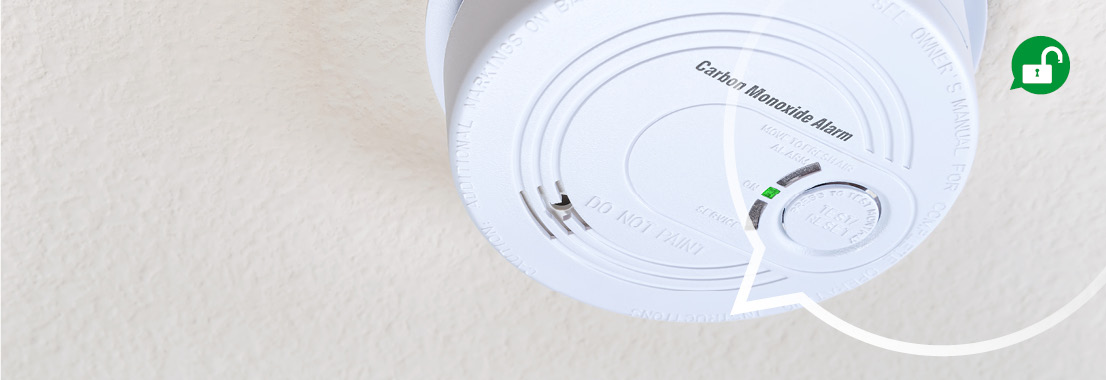
Carbon monoxide – the silent killer
Carbon monoxide – the silent killer
Dr Karen McDonnell on the vital need to be aware of carbon monoxide risks in all spheres of life.
Writing about carbon monoxide takes me right back to school days and chemistry lessons. The four fundamental states of matter (solid, liquid, gas and plasma), atomic and mass numbers and the periodic table.
While we may have long forgotten that carbon monoxide, also referred to by its chemical symbol CO, is made up of one carbon atom and one oxygen atom that are connected by a triple bond, we all need to remember that CO is a poisonous gas, a silent killer. You can’t see it, hear it, smell it or taste it, and if you breathe it in it can make you seriously ill.
Carbon monoxide poisoning can happen at work, home and during leisure time, caused by faulty or badly serviced gas and other fossil fuel-burning appliances and systems, such as boilers, gas cookers and clay ovens, gas or paraffin heaters, wood, gas and coal fires and portable generators.
Using barbeques, camping stoves, vehicles or lawn mower engines in an unventilated space (e.g. a garage or a tent) can also cause carbon monoxide poisoning.
The Carbon Monoxide and Gas Safety Society found that there was a total of 725 UK deaths caused by unintentional carbon monoxide poisoning between 1 Sept 1995 - 31 Aug 2022. The vast majority were in houses (404) and flats (104), followed by garages (37), boats (35) caravans/mobile homes (33), vehicles (32), commercial premises (27), sheds (21) and tents (17).
According to the National Institute for Health and Care Excellence (NICE), carbon monoxide poisoning is an underdiagnosed problem as the symptoms are so non-specific and it can be easily mistaken for common conditions such as flu.
There are approximately 4,000 attendances at accident and emergency departments and around 440 hospital admissions in England each year due to carbon monoxide poisoning, NICE says, with just over half due to accidental exposure.
What are the signs of carbon monoxide poisoning?
The NHS advises that symptoms of carbon monoxide poisoning can include:
The symptoms may come and go – they may worsen in an affected room or building and then get better when you leave or go outside.
Signs that carbon monoxide is present can include:
-
Boiler pilot light flames burning orange instead of blue
-
Sooty stains on or near appliances
-
Excessive condensation in the room
-
Coal or wood fires that burn slowly or go out.
If you think you might have carbon monoxide poisoning, stop using the appliance and open windows/doors to let fresh air in. Leave the affected building and get medical advice immediately.
How can I reduce the risk of carbon monoxide poisoning at home?
-
Have your gas appliances serviced annually by a gas engineer who is registered with Gas Safe Register
-
Use professionals to annually service any other fossil-fuel burning appliances, such as oil or coal burning stoves.
-
Use carbon monoxide detectors and ensure detectors are maintained and replaced according to packaging instructions.
Workplaces
Health and Safety Executive guidance is clear in that CO is a substance that is hazardous to health and exposure must be managed through the implementation of the Control of Substances Hazardous to Health Regulations. They advocate an Assess, Control, Review model, where risks to worker health are identified and their significance assessed, control measures identified and embedded then reviewed to ensure they remain in place. Involving workers and their representatives at each stage of the process saves lives.
In domestic properties and workplaces such as shops, restaurants, schools and hospitals, work on gas fittings must only be carried out by a Gas Safe registered engineer who is qualified to do the work.
In the following places, work on gas fittings must be carried out by a competent person: factories; mines; quarries; agricultural premises; construction site huts; and sewage works. HSE has more information at: www.hse.gov.uk/gas/employers.htm
Remember Carbon Monoxide is stealthy and can sneak up on you at work, rest and play…
Check out RoSPA’s carbon monoxide safety webpage at: www.rospa.com/home-safety/advice/carbon-monoxide-safety
Dr Karen McDonnell is RoSPA's Occupational Safety and Health Adviser and Head of RoSPA Scotland. A Past President of IOSH, Karen represents RoSPA on The Sleep Charity Advisory Board, the Council for Work and Health and the International Network of Safety and Health Practitioner Organisations.
Already a member? Login to MyRoSPA to read more articles

Login to you MyRoSPA account
Login to MyRoSPA to view exclusive member content
Login
| Join RoSPA
Become a member now
Become a member to access MyRoSPA to view more exclusive content
Join
Already a member? Login to MyRoSPA to read more articles

Login to you MyRoSPA account
Login to MyRoSPA to view some more exclusive content
Login
| Join RoSPA
Become a member now
Become a part of the MyRoSPA team to view more exclusive content
Register